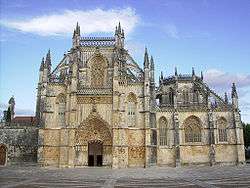IGESPAR

The Instituto de Gestão do Património Arquitectónico e Arqueológico (IGESPAR), former Instituto Português do Património Arquitectónico (IPPAR), (English: Institute of Management of Architectural and Archaeological Heritage) is a public institute of Government of Portugal tasked with the conservation, preservation, and inventory of Portuguese architectural heritage. This includes buildings and sites of historical, architectural, scientific or artistic value. The institute keeps a registry of all the classified sites and issues legally binding opinions regarding any works on them.
History
It was established after the initiatives of PRACE (which was a central administrative restructuring programme) and implemented by the Council of Ministers (Resolution No. 124, dated 4 August 2005), as decree 96/2007 (29 March 2007). IGESPAR resulted from a fusion of the Instituto Português do Património Arquitectónico (IPPAR) and the Instituto Português de Arqueologia (IPA), while integrating many of the functions of the Direcção Geral dos Edifícios e Monumentos Nacionais (DGMEN) which had been active in the conservation and rehabilitation of the country's architectural treasures.
Ministerial Order no.376 (20 March 2007) established its internal structure and statutes, while the Ministry of Culture's organic law established regional directorates (except in the Azores and Madeira, where cultural preservation programs were established under their respective Regional Secretaries).
Archival material, that until then were held by the DGMEN, were transferred to Instituto de Habitação e Reabilitação Urbana (Institute for Housing and Urban Rehabilitation) of the Ministry of the Environment (Portuguese: Ministério do Ambiente), the department of Ordenamento do Território e do Desenvolvimento Regional (Spatial Planning and Regional Development), under the auspices of the SIPA - Sistema de Informação para o Património (Heritage Information System) on 30 May 2007.
Structure
IGESPAR is a State agency, under the auspices of the Ministério da Cultura (Ministry of Culture), with responsibilities for the architectural and archaeological heritage. Its internal structure is laid out in Ministerial Order no.376, dating to 20 March 2007, whereupon the organization is divided into five individual services:
- Salvaguarda (Safeguarding Department), which is responsible for coordinating and initiating studies on candidates for listing as national patrimony, the promotion of plans for safeguarding buildings, restrict or invalidate construction projects that infringe on national patrimony, and monitor, as well as implement projects to conserve national patrimony;[1]
- Inventário, Estudos e Divulgação (Inventory, Studies and Dissemination Department), the department responsible for the physical analysis of the conditions, state and study of the national monuments or architecture of national interest, and provide technical assistance for listed patrimony;[2]
- Projectos e Obras (Projects and Works Department), follows the conservation process of existing buildings and structures on site, providing solutions for existing degradation and promoting preventative solutions for existing sites;[3]
- Jurídico (Law Department) provides legal decisions and supports IGESPAR's legal intervention on behalf of existing or ongoing investigations;[4] and
- Gestão (Management Department), responsible for managing the ongoing structure of the organization and sustaining operations.[5]
At the same time, it is also responsible for managing the operations of several of the nation's more importance architectural sites, including: the Convent of Christ in Tomar, the Monastery of Batalha in Batalha, the Monastery of Alcobaça, the Jeronimos Monastery and Tower of Belém in Santa Maria de Belém, the National Pantheon in the Church of Santa Engrácia, the Monastery of Santa Cruz in Coimbra and the Archeological Park of the Côa Valley.
References
Notes
Sources
- Diário da República, ed. (30 March 2007), Portaria 376/2007 (PDF) (in Portuguese) (64) (Série I ed.), Lisbon, Portugal: INCM SA - Imprensa Nacional Casa da Moeda, pp. 2019–2024, retrieved 15 August 2011
